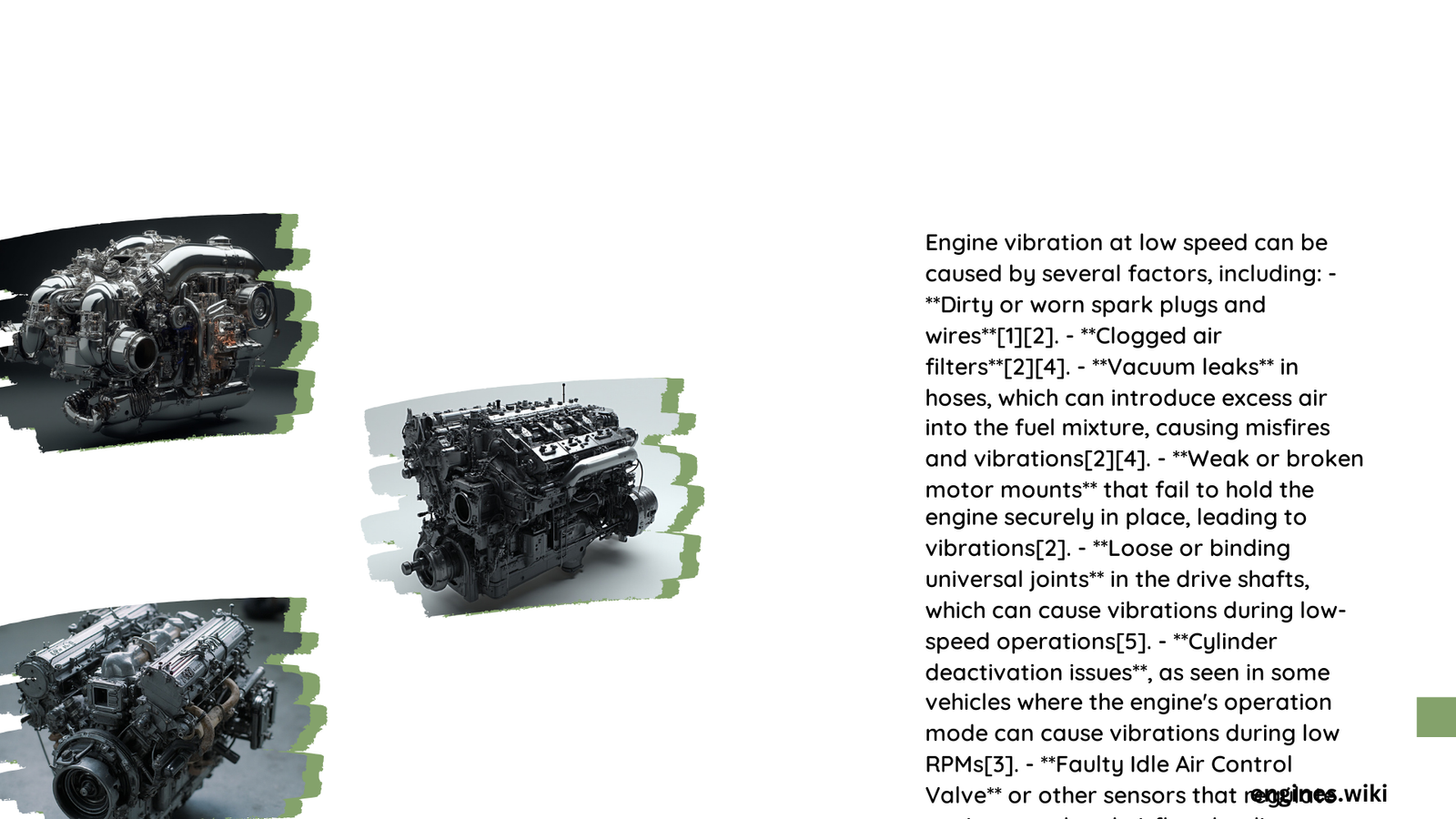Understanding Engine Vibration at Low Speed
Quick Overview
Engine vibration at low speed can be a complex and frustrating issue for vehicle owners, potentially indicating underlying mechanical or electronic problems. These subtle yet disruptive vibrations often emerge during idle or low-speed driving, signaling potential issues with motor mounts, fuel systems, or critical engine components that require immediate professional attention.
What Causes Engine Vibration at Low Speed?
Mechanical Component Failures
| Component | Potential Vibration Cause | Diagnostic Indicators |
|---|---|---|
| Motor Mounts | Worn or damaged supports | Excessive engine movement |
| Spark Plugs | Uneven fuel combustion | Irregular idling |
| Fuel Injectors | Carbon buildup | Rough engine performance |
Why Do Motor Mounts Fail?
Motor mounts are critical shock absorption components designed to secure the engine and minimize vibration transfer. When these mounts deteriorate, they cannot effectively dampen engine movement, leading to noticeable vibrations. Key failure factors include:
- Age-related wear
- Extreme temperature exposure
- Excessive mechanical stress
- Manufacturing defects
How Can Vacuum Leaks Impact Engine Performance?
Vacuum leaks introduce unmetered air into the engine’s intake system, disrupting the precise air-fuel mixture. This imbalance causes:
- Irregular combustion cycles
- Unpredictable engine performance
- Increased vibration at low speeds
Diagnostic Strategies for Precise Identification
Professional Diagnostic Steps:
- Conduct visual inspection of engine components
- Use advanced scanning tools
- Measure vibration frequency and amplitude
- Check for trouble codes
- Perform comprehensive system pressure tests
Cost-Effective Vibration Mitigation Techniques
Recommended Interventions:
- Replace worn motor mounts ($50-$200 per mount)
- Clean or replace fuel injectors
- Inspect and replace spark plugs
- Seal potential vacuum system leaks
- Install specialized vibration dampers
Technical Vibration Measurement Parameters
Acceptable Vibration Thresholds:
– Frequency Range: 10-50 Hz
– Amplitude: Less than 1.0 mm
– Duration: Consistent across idle and low-speed conditions
Prevention and Maintenance Recommendations
Proactive Maintenance Checklist:
– Regular engine tune-ups
– Annual comprehensive vehicle inspection
– Timely replacement of wear-prone components
– Use high-quality replacement parts
– Monitor vehicle performance consistently
Expert Insights
Experienced automotive technicians emphasize that early detection of engine vibration at low speed can prevent costly long-term damage. Consistent monitoring and professional diagnostics are crucial for maintaining optimal vehicle performance.
When to Seek Professional Help
Immediate Professional Consultation Recommended If:
– Vibrations persist after basic maintenance
– Unusual sounds accompany the vibration
– Performance degradation is noticeable
– Check engine light appears
Conclusion
Understanding and addressing engine vibration at low speed requires a systematic approach, combining technical knowledge, precise diagnostics, and proactive maintenance strategies.

